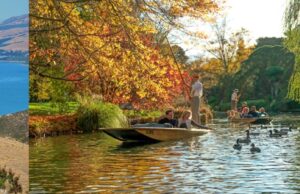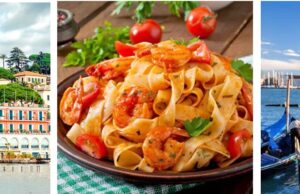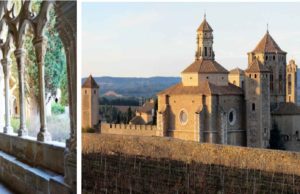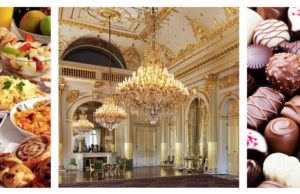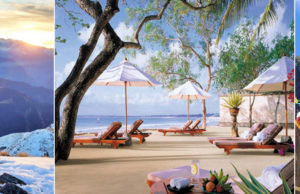
WoT's Hot
Want to pierce the bull’s eye of Italy? Then journey with us into its green heartland, comfortably landlocked, yet so verdant and viridian. Blue, too, with the river Tiber flowing through it and the many picturesque lakes dotting the landscape. We’ve chosen Umbria because our friends, Brian and Lynne Chatterton, from Australia, have settled there in their mountainous hideaway in Montegabbione, surrounded by olive groves which they own and tend. From where they write copiously and run their own publishing house—Pulcini Press. And there is also Umbria, with its rich medieval heritage which we wish to explore.
Don’t know this region? Obviously, because the neighboring Tuscany seems to be a better traveled destination. For some, it is a pilgrimage to the Uffizi, to get a fill of Renaissance art, for others a trip to the historic Siena to perhaps take in the Palio horse race which many may have viewed in the Bond film Quantum of Solace. And yet other tourists who are drawn to Pisa for its leaning tower and a quick taste of cecina—a gluten free bread made with chickpea flour and black pepper. We will not dwell on this Tuscan region for now, as we need to bring you back to the Etruscan sun-filled Umbria.
But just a quick pointer about visiting the Uffizi for we benefited from advice given by friends—do book in advance for a Skip the Line tour, and one which preferably has a guide (the audio guides will do, too), for around Euro 37. And get your fill of Botticelli’s Venus, so very much an iconic part of this museum. At the end of a never-ending but fulfilling tour, we recommend a risotto that we had with fresh pears. Sadly, never tasted the likes of this again. But yes, luscious pears we certainly had all over Italy.
Back in mountainous Umbria, our plane lands in its capital Perugia. To better describe this university town, I take recourse to a description in the Lonely Planet. “Lifted by a hill above a valley patterned with fields, where the River Tiber runs swift and clear, Perugia is Umbria's petite and immediately likeable capital. Its centro storico (historic centre) rises in a helter-skelter of cobbled alleys, arched stairways and piazzas framed by magnificent palazzi (mansions). History seeps through every shadowy corner of these streets and an aimless wander through them can feel like time travel.
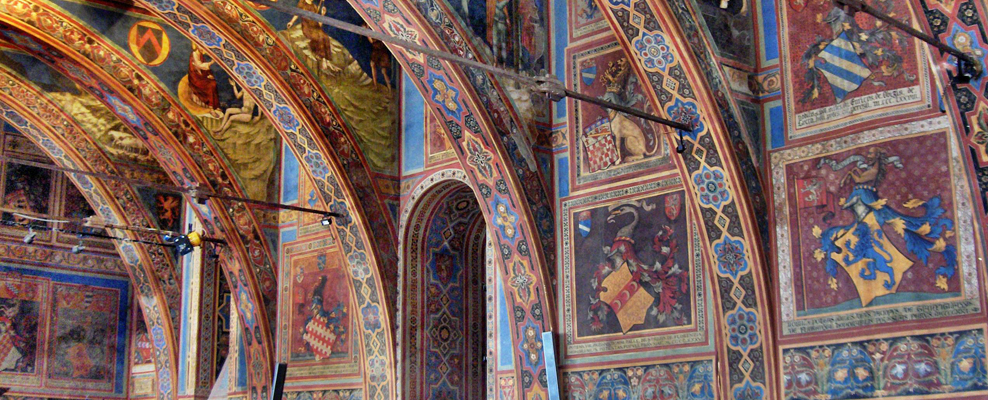
Back in the 21st century, Perugia is a party-loving, pleasure-seeking university city, with students pepping up the nightlife and filling cafe terraces. The hopping summer event line-up counts one of Europe's best jazz festivals. Together with its spiritual sister, Assisi, Perugia is a candidate for European Capital of Culture 2019.”
But we must hasten to Orvieto, where the Duomo is an example of Italian Gothic at its finest. We reach by car and then get off to walk the cobblestone streets—and suddenly there it is before you—the imposing Gothic façade of the Orvieto Cathedral—one of the great masterpieces of the Late Middle Ages. Soaring seven storeys into the sky. Begun by Lorenzo Maitani around 1300, it took more than 100 years to complete.
A couple of striking things about the cathedral remain with you—the zebra-striped alternating local white travertine and blue-grey basalt stone columns for one. And the dramatic gilded frontage decorated with bas reliefs and statues with symbols like the angel, ox, lion and eagle of the Evangelists standing on the cornice above the sculptured panels on the piers.
The bas-reliefs depict biblical stories from the Old and New Testament. They are considered among the most famous of all 14th-century sculpture. These marbles are the collective and anonymous work of at least three or four masters and depict stories of the Old Testament and the New Testament, and the Last Judgment.
An outstanding set of frescoes inside the Brizio chapel created by Luca Signorelli need to be mentioned. He was an Italian Renaissance painter whose massive Last Judgment frescoes are the masterpieces not to be missed by any traveler. It is said that he was influenced by Dante’s Divine Comedy, but what could really have impacted on him was when the zealot Savonarola who preached the Apocalypse, was burned at the stake and Signorelli witnessed it, that he went on to create, on every inch of the chapel, scenes depicting the end of the world, the resurrection of the dead, Paradise and Hell. We are led into the contextuality of this by our hosts, hence have been able to appreciate, if not be somewhat overawed by the scenes.
We are told that Michelangelo took inspiration from these paintings for his "Last Judgment" at the Sistine Chapel.
Coming out of the cathedral on to a sun-filled piazza, we get into cathartic mode as we buy multi-fruit-flavored ice creams and admire the exteriors some more.
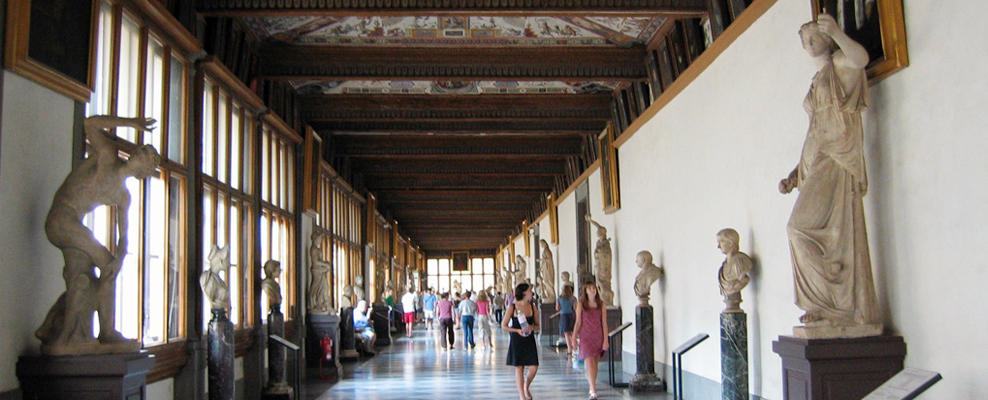
And then go down alleyways full of the most glorious colorful ceramics, a specialty of the region. Our hosts have collected a variety of ceramic dishes over the years, and each meal was, apart from the varied cuisine, an artistic treat, as different sets of crockery appeared over lunch, dinner, breakfast. Unmatched making it even more unique as handmade ceramics ought to be.
The food in Umbria is nothing like you will find anywhere else in Italy. It is hearty and flavorful, and even rustic. In fact people talk about “cucina povera” which translates into peasant cooking that comes from using their many types of lentils and vegetables, lots of fresh herbs. And of course olive oil, which is referred to as liquid gold.
After the freshly pressed olive oil used by our hosts from their very own groves, which could pep-up any dish, it will never be the same again to buy what we get at our own supermarkets.
While Umbria is known for its meat products, its poultry, wild game, boar, hare, beef, lamb, cured pork products, suckling pig, wood pigeon, equally we found the use of fresh vegetables like fava beans, and asparagus and of course a huge variety of truffles. Great varieties of handmade pastas, some done without using egg, and artisanal cheeses and regional wines. Ah those truffles! They are “hunted” by dogs who know which ones to pick out, and that only the ripe ones are to be taken. Our friends have a charming Border Collie, and this young thing, apart from being a superb guard dog, is also able to sniff out and find truffles. The Norcia region is famous for its black truffles. Any dish gets an enhanced twist when truffles enter it.
An antipasti with an olive and truffle paste, or as we did one day, a broad bean fava paste (the fat beans were picked just before dinner) which we had with a fennel salad—again the crunchy fennel was from the garden, as were the fat spears of asparagus. But never give up a basic Italian Strangozzi with spoletina sauce. It is a long and irregularly cut pasta, strangozzi meaning “strangled priests”. While the spoletina is a pepperry tomato sauce with Italian peppers and parsley.
The desserts in this region are generally baked, and use a lot of almonds and other nuts, and honey and spices and candied fruits. But when, at the airport, you are buying a box of Baci chocolates made with hazelnuts and dark chocolate (Baci meaning kiss), do remember that they come from the Perugina chocolate factory which dates back to the early twentieth century. Sweet endings, but if it is the cuisine of central Italy, there is an entirely new piece that awaits penning.
SaveWant to pierce the bull’s eye of Italy? Then journey with us into its green heartland, comfortably landlocked, yet so verdant and viridian. Blue, too, with the river Tiber flowing through it and the many picturesque lakes dotting the landscape. We’ve chosen Umbria because our friends, Brian and Lynne Chatterton
What to read next
Featured articles

Welcome Festive Season in Glam, Latin Quarters Launches new #PujoBling Collection with Monami Ghosh
by WOT




































